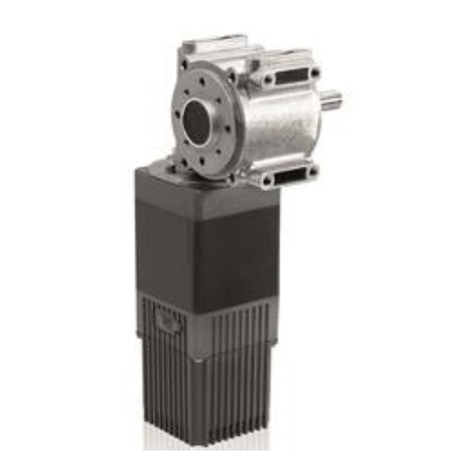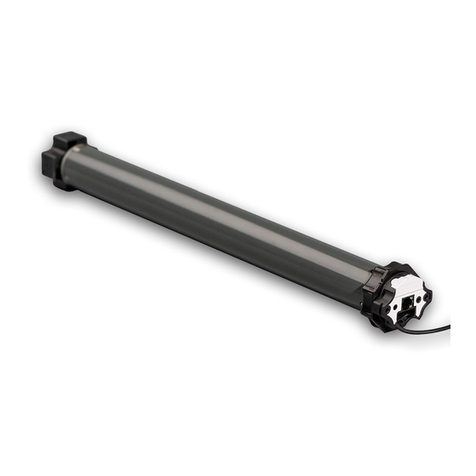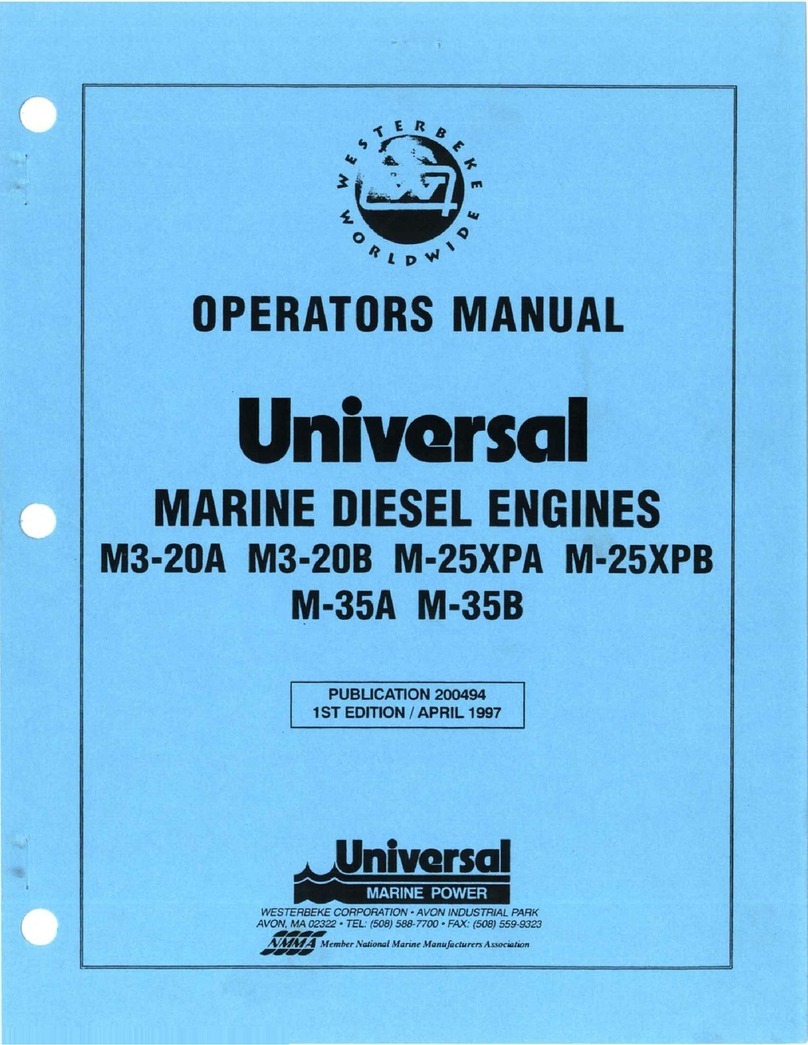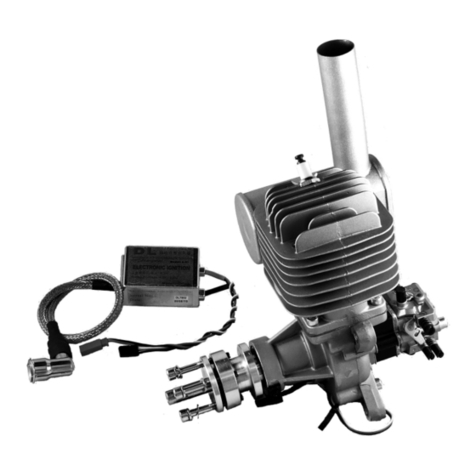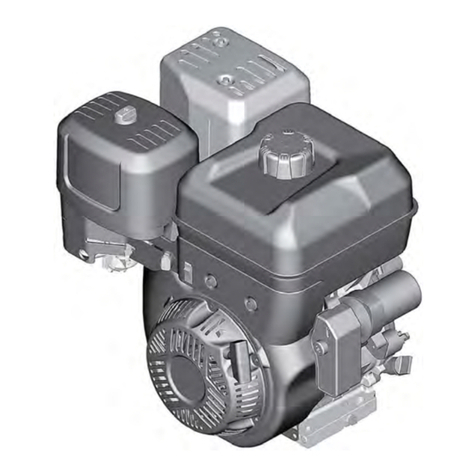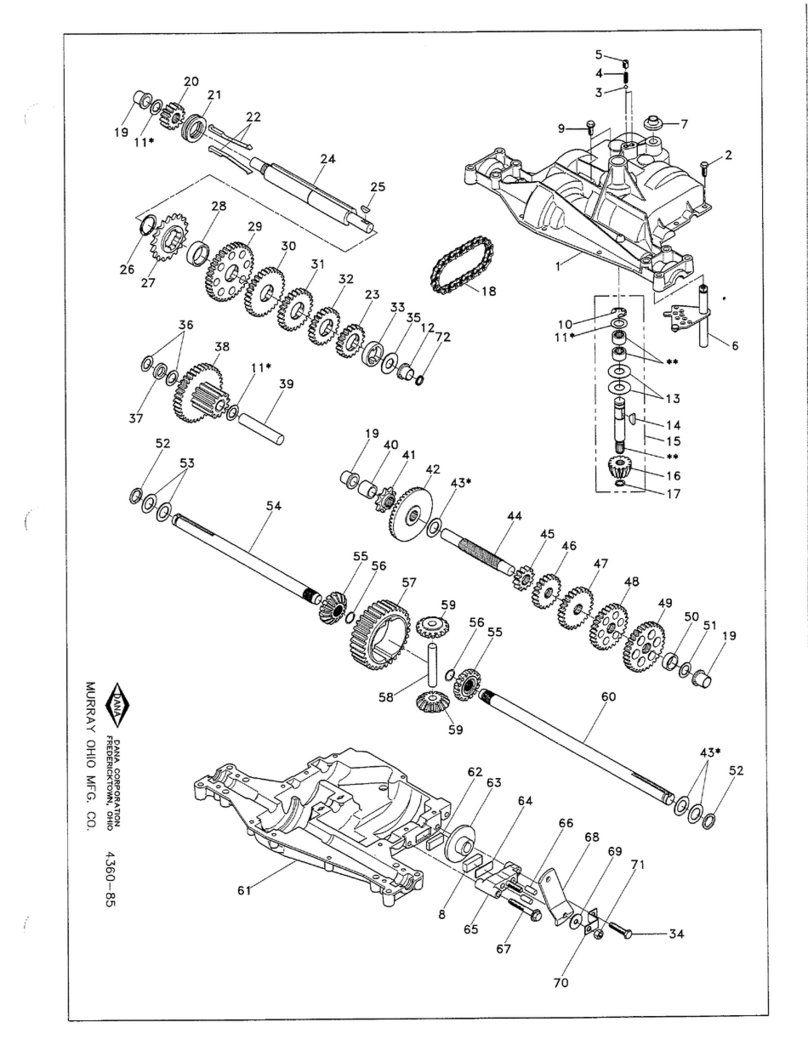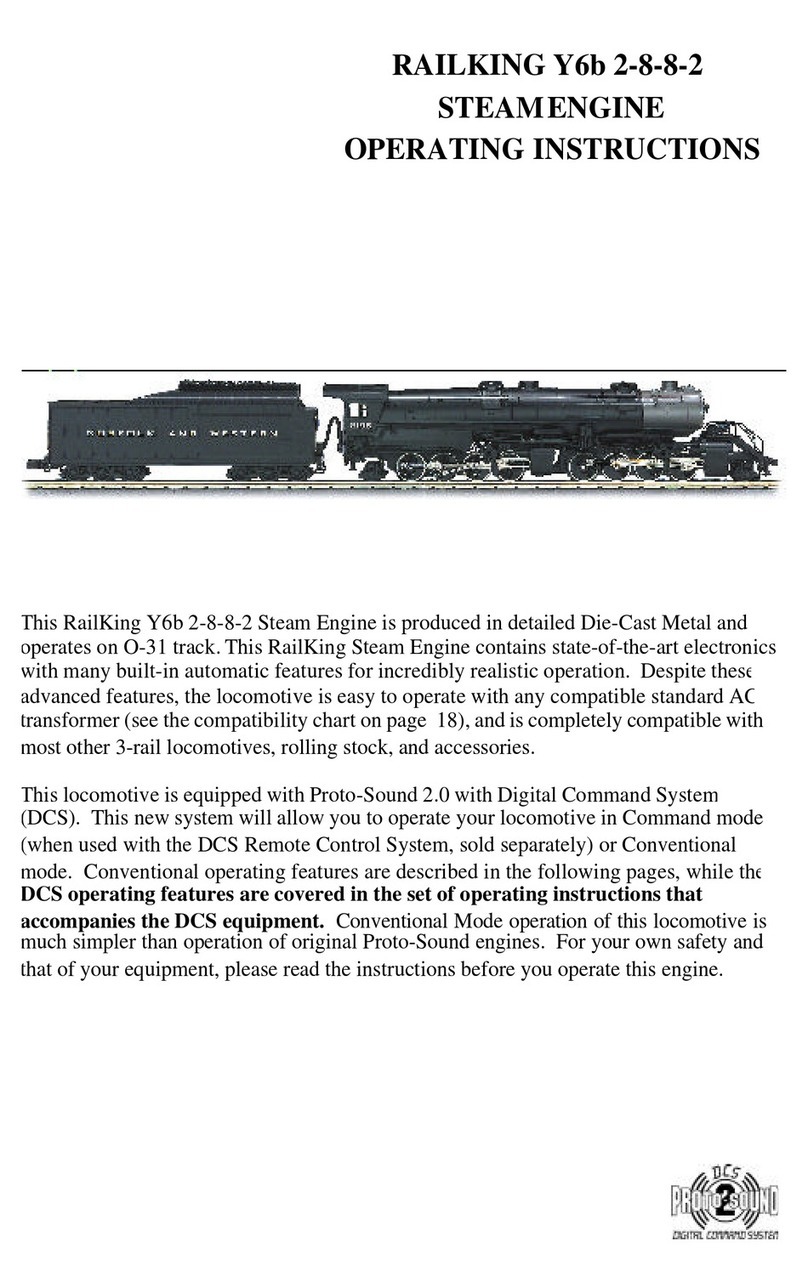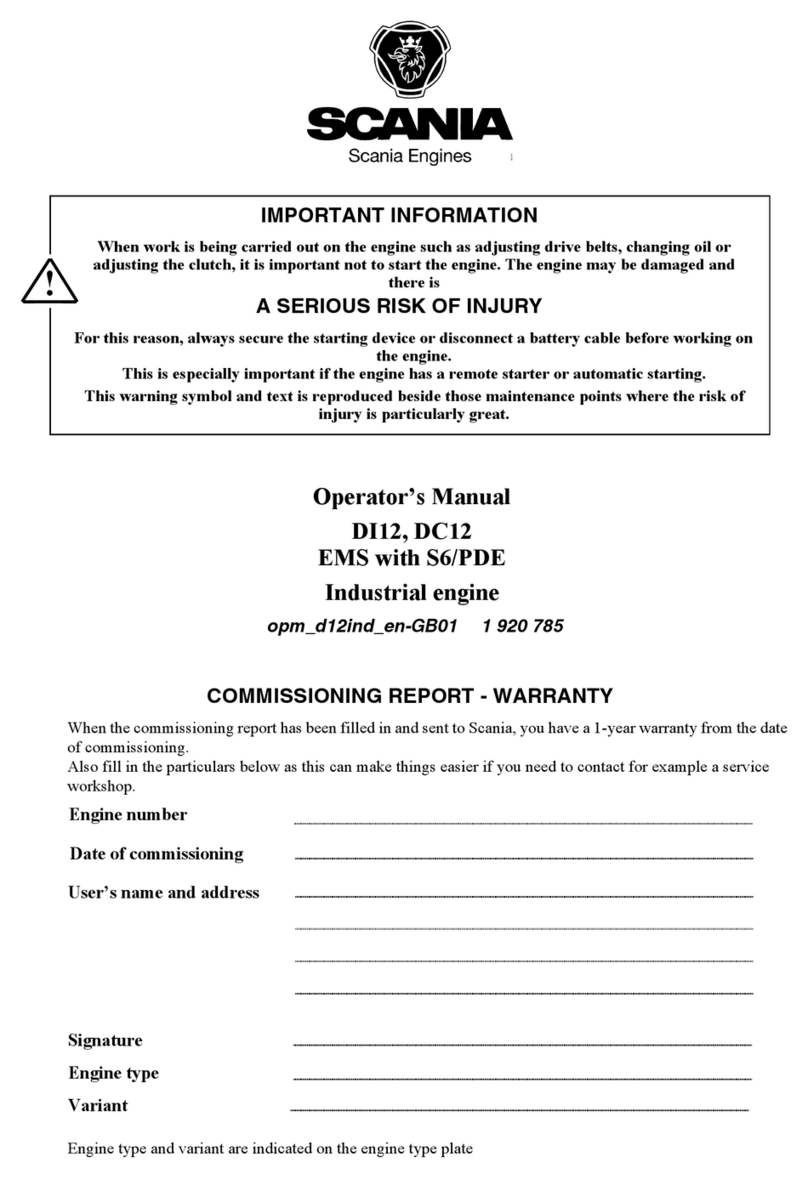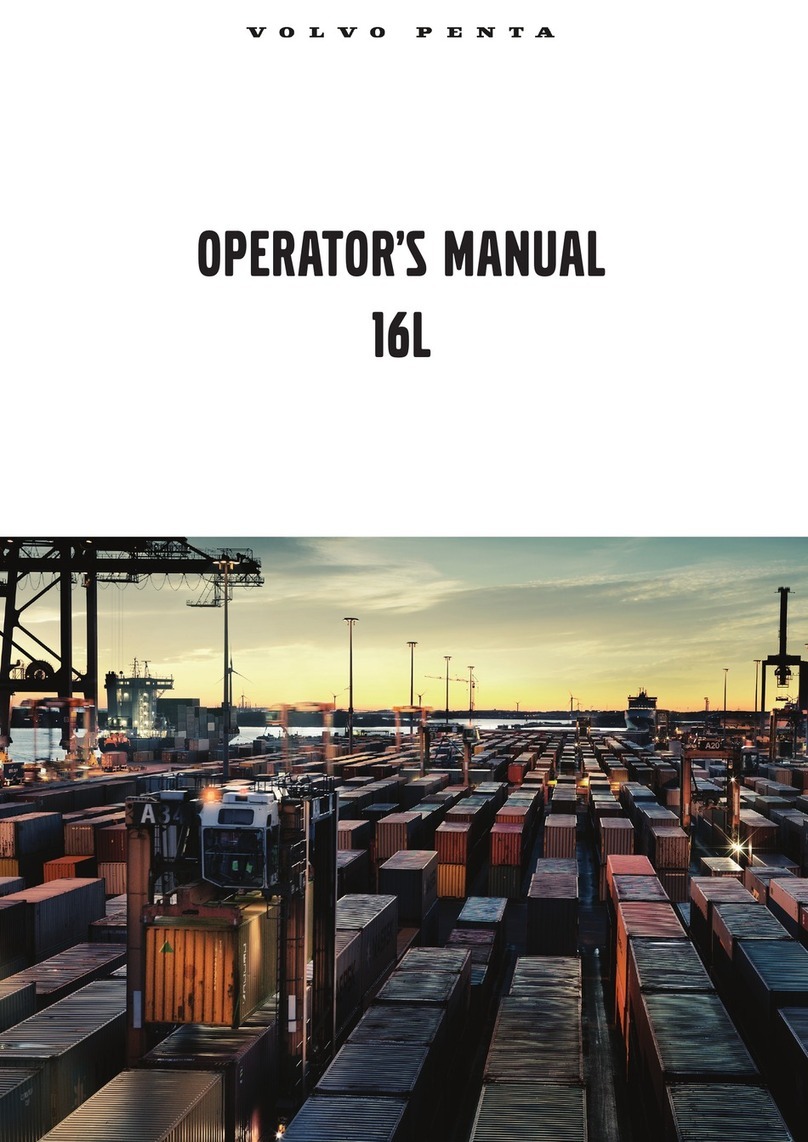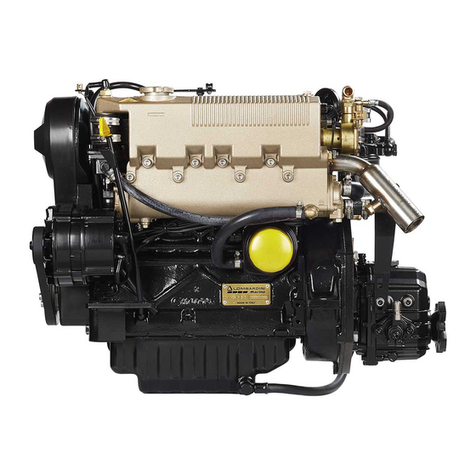Innovista Sensors CROUZET TNi21 Series Instruction Manual

WWW.CROUZET-MOTORS.COM
TNi21 DCMIND BRUSHLESS
MOTORS
USER AND SAFETY MANUAL

07 April 2016 Page 1/38
TNi21 DCmind brushless motors
User and safety manual
Important notes
This manual is part of the product.
Read and follow the instructions in this manual.
Keep this manual in a safe place.
Give this manual and any documents relating to the product to anyone using the product.
Read and follow closely all the safety instructions in the "Before you start - Safety information"
section.
Please see the current catalogue for the product's technical specification.
We reserve the right to make modifications without prior notice.
Unless otherwise stated in writing by Crouzet Automatismes, any use of the products described
herein automatically signifies unconditional acceptance by the user of our general conditions of sale
and the waiver of any stipulations which might be printed on its orders or correspondence. Crouzet
Automatismes accepts no liability for any malfunction or damage caused by the user, due to the use
of this manual or the instructions herein.

TNi21
07 April 2016 Page 2/38
Table of contents
1. Introduction................................................................................................................................................5
1.1. Motor family.......................................................................................................................................5
1.2. Features............................................................................................................................................5
1.3. Options..............................................................................................................................................5
1.4. Identification label .............................................................................................................................5
1.5. Product coding ..................................................................................................................................6
2. Before you start - Safety information.........................................................................................................7
2.1. Qualification of personnel..................................................................................................................7
2.2. Use for intended purpose..................................................................................................................7
2.3. Basic information...............................................................................................................................8
2.4. Standards and concepts ...................................................................................................................9
3. Precautions for use at a mechanical level...............................................................................................10
3.1. Data specific to the motor shaft ......................................................................................................10
3.1.1. Force applied when pushing items on to the shaft.................................................................10
3.1.2. Radial load on the shaft..........................................................................................................10
3.2. Options............................................................................................................................................11
3.2.1. Holding brake .........................................................................................................................11
3.2.2. Gearboxes..............................................................................................................................11
3.2.3. Others.....................................................................................................................................11
4. Installation................................................................................................................................................12
4.1. Snapshot of the installation procedure............................................................................................14
4.2. Electromagnetic compatibility, EMC ...............................................................................................14
4.3. Before fitting....................................................................................................................................15
4.4. Fitting the motor ..............................................................................................................................16
4.5. Electrical installation........................................................................................................................17
4.5.1. Connecting the holding brake (option) ...................................................................................19
4.6. Production connector ......................................................................................................................20
5. Switching on.............................................................................................................................................21
5.1. Preparations for switching on..........................................................................................................21
6. Product presentation................................................................................................................................23
6.1. Description of the product...............................................................................................................23
6.2. TNI21 control electronics ................................................................................................................23
7. Technical characteristics .........................................................................................................................24
7.1. Electrical data..................................................................................................................................24
7.2. Generic data....................................................................................................................................24
7.3. Control logic bundle ........................................................................................................................25
7.4. Power supply cable.........................................................................................................................26
8. Motor electrical connection......................................................................................................................27

TNi21
07 April 2016 Page 3/38
8.1. Power connection............................................................................................................................27
8.1.1. Ballast circuit ..........................................................................................................................27
8.1.2. Protection for EMC.................................................................................................................29
8.2. Protective devices...........................................................................................................................30
8.2.1. Voltage protection...................................................................................................................30
8.2.2. Temperature protection..........................................................................................................30
8.2.3. Current limiting .......................................................................................................................31
8.3. Connecting inputs/outputs...............................................................................................................31
8.3.1. Equivalent inputs diagram......................................................................................................31
8.3.2. Equivalent outputs diagram....................................................................................................32
9. Operating mode.......................................................................................................................................33
9.1. Preliminaries ...................................................................................................................................33
9.2. Functions associated with inputs ....................................................................................................33
9.2.1. Function E1 - On / Off ............................................................................................................33
9.2.2. Function E2 - Direction of rotation..........................................................................................33
9.2.3. Function E3 - Speed set-point................................................................................................33
9.2.4. Function E4 - Torque limiter set-point....................................................................................34
9.3. Functions associated with outputs..................................................................................................34
9.3.1. Function S1 - Encoder output.................................................................................................34
9.3.2. Function S2 - Torque limiter output........................................................................................34
9.3.3. Function S3 - Actual direction of rotation output ....................................................................34
9.4. SAFE mode.....................................................................................................................................35
10. Diagnostics and troubleshooting .........................................................................................................35
10.1. Mechanical faults ............................................................................................................................35
10.2. Electrical problems..........................................................................................................................35
11. Service, maintenance and problem solving ........................................................................................36
11.1. Addresses of after-sales service points ..........................................................................................36
11.2. Storage............................................................................................................................................36
11.3. Maintenance....................................................................................................................................36
11.4. Replacing the motor........................................................................................................................37
11.5. Shipping, storage, disposal.............................................................................................................37
11.6. Terms and abbreviations.................................................................................................................38

TNi21
07 April 2016 Page 4/38
About this manual
This manual applies to TNI21 DCmind brushless products:
801400TNI21, 801495TNI21, 801496TNI21, 801410TNI21,
801800TNI21, 801896TNI21, 801897TNI21, 801810TNI21,
802800TNI21, 802896TNI21, 802897TNI21, 802810TNI21,
Reference source for manuals
Manuals are available to download from the Internet at the following address
http://www.crouzet.com/
Units
By default, units rotate anti-clockwise.
Risk categories
In this manual, safety instructions are identified by warning symbols.
Safety instructions are divided into three risk categories, depending on the gravity of the situation.
DANGER
DANGER indicates an immediately dangerous situation, which, if
instructions are not followed, would inevitably result in a serious or
fatal accident.
WARNING
WARNING indicates a potentially dangerous situation which, if
instructions are not followed, could in certain cases result in a serious
or fatal accident or cause damage to equipment.
CAUTION
CAUTION indicates a potentially dangerous situation which, if
instructions are not followed, could in certain cases result in an
accident or cause damage to equipment.

TNi21
07 April 2016 Page 5/38
1. INTRODUCTION
1.1.Motor family
TNI21 DCmind brushless motors are direct current brushless motors with a built-in electronic control board.
1.2.Features
TNI21 DCmind brushless motors are intelligent servomotors for speed and torque control applications.
They are fitted with two unscreened cables as standard, one for power and one for control.
1.3.Options
Motors may be supplied with options such as:
a range of gearboxes
a holding brake in the event of loss of current
various motor output shaft versions
1.4.Identification label
The label carries the following information:
Figure 1
1. Product family code
2. Product reference
3. Reserved area
4. Area reserved for special customer markings
5. Date manufactured: week/year
6. Operating voltage
7. The motor's rated speed at 24V
8. The motor's rated current
9. Gear ratio (for versions with gearboxes)
10. Maximum nominal torque applicable to gearboxes (for versions with gearboxes).
11. Motor approvals.
12. Insulation system temperature class.
13. Degree of protection (sealing) of the product during operation (apart from the output shaft).
14. Country of manufacture

TNi21
07 April 2016 Page 6/38
1.5.Product coding
80 XX XX TNI21: Product family based on TNI21 electronics
PRODUCT REFERENCE
8
0
X
X
X
X
X
X
Motor
Type of stator:
14: 30 mm brushless stator
18: 50mm brushless stator
28: 50mm brushless stator
high torque
Gearboxes fitted:
00: no gearbox
10: RAD10 gearbox
95: P52 gearbox
96: P62 gearbox
97: P81 gearbox
Incrementing numbers

TNi21
07 April 2016 Page 7/38
2. BEFORE YOU START - SAFETY INFORMATION
2.1.Qualification of personnel
Only qualified personnel, familiar with and understanding the contents of this manual, are authorised to work
on and with this product.
Qualified personnel should have a sound knowledge of current standards, regulations and requirements with
regard to accident prevention, when carrying out work on or with the product.
Those personnel must have undergone safety training, so that they are able to detect and prevent any
associated danger.
By virtue of their professional training, knowledge and experience, these qualified personnel should be able
to provide warning or recognise potential dangers, that could be caused by use of the product, modifying its
settings or those of mechanical, electrical and electronic equipment in the installation in general.
2.2.Use for intended purpose
As stated in these instructions, this product is a component intended for use in an industrial environment
The safety instructions in force, specified conditions and technical characteristics must be respected at all
times.
Before using the product for the first time, a risk analysis should be carried out on its use in practice.
Depending on the result, any necessary safety measures should be taken.
Since the product is used as a component in an overall system, it is the user's responsibility to ensure the
safety of persons through the design of the overall system, e.g. machine design.
Use only original spare parts and accessories.
The product must not be used in an explosive atmosphere (Ex zone).
Any other use is considered as non-compliant and could cause danger.
Only duly qualified personnel are authorised to install, operate, maintain and repair electrical devices and
equipment.

TNi21
07 April 2016 Page 8/38
2.3. Basic information
DANGER
DANGER DUE TO ELECTRIC SHOCK, EXPLOSION OR EXPLOSION DUE TO AN
ELECTRICAL ARC
• Only qualified personnel, familiar with and understanding the contents of this
manual, are authorised to work on and with this product. Only qualified personnel
are authorised to install, adjust, repair and maintain it.
• The person/entity constructing the installation is responsible for compliance with
all applicable requirements and regulations concerning the earthing of the drive
system.
• It is the user's responsibility to determine whether it is necessary to earth the
motor, depending on its use.
• Do not touch unprotected live parts.
• Use only electrically insulated tools.
• AC voltages may flow along unused conductors in the motor cable. Isolate unused
conductors at both ends of the motor cable.
• The motor produces a voltage when the shaft rotates. Isolate the motor shaft from
any external power supply, before carrying out any work on the drive system.
–Switch off all connections
–Attach a "DO NOT SWITCH ON" sign on all switches.
–Prevent all switches from being re-engaged.
–Wait for the motor's internal capacitors to discharge.. Measure the voltage in the
power cable and check that it is less than 12V DC.
• Fit and close all protective covers before re-applying power..
Failure to take these precautions could result in death or serious injury.

TNi21
07 April 2016 Page 9/38
WARNING
LOSS OF CONTROL
• When designing the control of the installation, the manufacturer should keep in
mind the implications of a potential failure in control paths and, for certain critical
functions, provide a method for returning to a safe state during and after the failure
of a control path.
Examples of critical control functions are:
EMERGENCY STOP, restricting the final position, network interruption and re-
starting.
• Separate or redundant control paths must be available for critical functions.
• Follow accident prevention instructions and all applicable safety directives.
• Any installation in which the product described in this manual is used must be
carefully and minutely checked to ensure that it is operating correctly, before it is
switched on.
If these precautions are not taken, the result could be death or serious injury.
WARNING
UNBRAKED MOVEMENT
In the event of a loss of power to the power stage, the motor is no longer braked in
a controlled way and could cause damage.
• Prevent access to the risk area..
• If necessary, use a damped mechanical stop or a service brake.
If these precautions are not taken, the result could be death, serious injury or
damage to equipment.
2.4.Standards and concepts
This product complies with European ROHS Directive 2011/65/EC and is CE marked.
The product's electrical design complies with standards IEC 60335-1 and IEC 60950-1.

TNi21
07 April 2016 Page
10/38
3. PRECAUTIONS FOR USE AT A MECHANICAL LEVEL
3.1.Data specific to the motor shaft
3.1.1. Force applied when pushing items on to the shaft
WARNING
MECHANICAL CHARACTERISTICS OF THE MOTOR
Exceeding the maximum permitted force on the shaft will result in rapid
wearing of the bearings, a broken shaft or the deterioration of any
accessories (encoder, brake, etc.)
• Never exceed the max. permissible radial or axial forces on the
motor.
• Protect the shaft against impacts.
• When pushing items in to the shaft, do not exceed the maximum
permitted axial force.
If these precautions are not taken, the result could be death,
serious injury or damage to equipment.
The maximum force when pushing items on to the shaft is limited by the maximum permitted axial force
acting on the ball bearings.
This maximum axial force is given in the motor's data sheet.
Alternatively, the item to be attached can be secured by clamping, bonding or binding.
3.1.2. Radial load on the shaft
Figure 2
The point of application Xof the radial force Fdepends on the size of the motor.
This information is shown in the motor's data sheet.
The maximum radial and axial loads should not be applied simultaneously, so as to maximise the motor's
service life.
F
X

TNi21
07 April 2016 Page
11/38
3.2.Options
3.2.1. Holding brake
TNI21 DCmind brushless motors can be fitted with a fail safe electromechanical brake.
The holding brake is designed to prevent the shaft from rotating when there is no power to the motor.
The holding brake has no safety function.
The "Connecting a holding brake" section describes how it should be controlled.
3.2.2. Gearboxes
TNI21 DCmind brushless motors may be fitted with various types of gearbox.
The gearboxes offered in the standard catalogue are planetary gearboxes, combining compactness with
strength, and worm gearboxes that provide output from the shaft at right angles to the motor shaft.
3.2.3. Others
Other types of adaptation are possible upon request. Please contact our sales department.

TNi21
07 April 2016 Page
12/38
4. INSTALLATION
In a general sense, motors should be installed in line with good industrial practice.
WARNING
CONSIDERABLE WEIGHT AND FALLING PARTS
The motor can weigh a lot.
• Take the motor's weight into consideration when fitting it.
• Fit the motor (tightening torque of screws) in such a way that it
cannot come adrift, even in the event of high levels of acceleration or
permanent vibration.
If these precautions are not taken, the result could be death,
serious injury or damage to equipment.
WARNING
STRONG ELECTROMAGNETIC FIELDS
Motors can generate powerful local electrical and magnetic fields.
They can cause sensitive equipment to fail.
• Keep persons wearing implants such as heart pacemakers away
from the motor.
• Do not position sensitive equipment in the immediate proximity of the
motor.
If these precautions are not taken, the result could be death,
serious injury or damage to equipment.
WARNING
UNEXPECTED BEHAVIOUR AS A RESULT OF DETERIORATION OR
FOREIGN BODIES
As a result of deterioration of the product, the presence of foreign
bodies or deposits or penetration by fluids, unexpected behaviour can
occur.
• Do not use damaged products..
• Do not allow any foreign body to enter the product.
• Check that seals and power cable glands are correctly fitted.
• Check that the plug protecting the motor's internal connector is fitted
correctly.
If these precautions are not taken, the result could be death,
serious injury or damage to equipment.

TNi21
07 April 2016 Page
13/38
WARNING
HOT SURFACES
The metal surface of the product can reach more than 70°C during
use.
Avoid all contact with the metal surface.
• Do not position inflammable or heat-sensitive components in
immediate proximity.
• Try to achieve an assembly that allows heat to dissipate efficiently.
If these precautions are not taken, the result could be injury or
damage to equipment.
WARNING
DETERIORATION OR DESTRUCTION OF THE MOTOR DUE TO OVER-
STRESSING
The motor is not designed to withstand loads. If the motor is stressed,
it could be damaged or even fall.
• Do not stand on the motor.
• Prevent the motor being used in any other way than its intended
purpose by taking protective measures and following the safety
instructions.
If these precautions are not taken, the result could be injury or
damage to equipment.
CAUTION
OVER-VOLTAGES
During braking phases, the motor generates over-voltages.
• Check that these over-voltages are acceptable to other equipment
connected to the same power supply.
• Preferably, use an external circuit, to limit over-volting
In cases where braking is used intensively.
If these precautions are not taken, the result could be injury or
damage to equipment.

TNi21
07 April 2016 Page
14/38
4.1.Snapshot of the installation procedure
The installation procedure is described in the follow sections:
Electromagnetic compatibility, EMC
Before fitting
Fitting the motor
Electrical installation
Check that these sections have been read and understood and that, subsequently, the motor has been
installed correctly.
4.2.Electromagnetic compatibility, EMC
DANGER
INTERFERENCE AFFECTING SIGNALS AND EQUIPMENT
Interference with signals can cause equipment to behave
unpredictably
• Wiring should be done in accordance with the EMC
recommendations specific to each device.
• Ensure that these EMC recommendations are followed correctly.
If these precautions are not taken, the result could be death,
serious injury or damage to equipment.
Recommendations with regard to EMC: installing the motor's power supply wiring.
At the wiring planning stage, consider that the motor's power supply wiring must be installed isolated from
network or signal transmission cables.
Take the following measures with regard to EMC.
EMC measures
Effect
Keep cables as short as possible.
Do not install loops of unused cable.
Reduce interference, capacitive and inductive
couplings.
Earth the product.
Reduce emissions; increase immunity to
interference,
Where shielded cables are used, the cable
shielding should be fitted to the widest possible
surface area. Use cable clamps and earth bands.
Reduce emissions.
Position the motor's power supply wires separate
from cables that carry signals or use screening
plates.
Reduce mutual interference
If screened cables are used, fit them without an
isolation point. 1)
Reduce radiating interference.
1) Where the installation requires a cable to be cut, cables must be connected at the isolation point via a shielded cable inside a
metal enclosure.
Equipotential link conductors
Where screened cables are used, differences in voltage can cause currents not permitted in screened
cables. Fit equipotential link conductors to reduce current in screened cables.

TNi21
07 April 2016 Page
15/38
4.3.Before fitting
Look for damage
Damaged drive systems should not be fitted or used.
Check the drive system before fitting and look for visible signs of damage.
Cleaning the shaft
On leaving the factory, the ends of the motor shafts are coated with film of oil.
Where transmission devices are to be fitted by bonding, it may be necessary to remove that oil film and
clean the shaft. Where necessary, use degreasing products recommended by the manufacturer of the
bonding adhesive.
Avoid all contact between the skin and sealing materials and the cleaning product used.
Fitting surface for the flange
The fitting surface must be stable, flat and clean.
On the installation side, ensure compliance with all dimensions and tolerances.
Specification for power supply wires.
The power supply wires for the motor and its accessories must be selected with care according to their
length, the motor's supply voltage, the ambient temperature, the current passing through them and their
environment.
WARNING
DETERIORATION AND FIRE FOLLOWING INCORRECT INSTALLATION
Forces and movement in cable glands can damage cables.
• Comply with the stated bend radius
• Avoid subjecting cable glands to forces or movement.
• Secure supply cable close to cable glands using a strain relief clamp.
If these precautions are not taken, the result could be injury or
damage to equipment.

TNi21
07 April 2016 Page
16/38
4.4.Fitting the motor
DANGER
HOT SURFACES
The surface of the motor can reach more than 70°C during use.
• Avoid contact with hot surfaces.
• Do not position inflammable or heat-sensitive components in
immediate proximity.
• Try to achieve an assembly that allows heat to dissipate efficiently.
• Run a test to check the temperature.
If these precautions are not taken, the result could be injury or
damage to equipment.
WARNING
In rare cases, electrostatic discharges (ESD) on the shaft can cause
faults in the encoding system and unexpected movements of the
motor.
• Use conductive components, e.g. anti-static belts or other
appropriate measures to prevent any static charge due to movement.
WARNING
UNINTENDED BEHAVIOUR DUE TO MECHNANICAL DETERIORATION OF
THE MOTOR
Exceeding the maximum permissible forces on the shaft will result in
rapid wear of the bearings, a broken shaft or damage to the internal
encoder.
• Never exceed the max. permissible radial or axial forces on the
motor.
• Protect the shaft against impacts.
• When pushing items on to the shaft, do not exceed the maximum
permitted axial force.
If these precautions are not taken, the result could be death,
serious injury or damage to equipment.

TNi21
07 April 2016 Page
17/38
Installation position
The motor can be installed in any position.
Installation
When fitting the motor on the flange, it must be aligned precisely, both axially and radially. All securing
screws must be tightened to the torque prescribed by the application, taking care not to cause any warping.
Fitting transmission devices
Fitting transmission devices incorrectly could damage the motor.
Transmission devices such as pulleys and gears must be fitted with reference to the maximum axial and
radial forces specified in the data sheet for each motor.
Follow the manufacturer's fitting instructions for each transmission device.
The motor and transmission device must be aligned accurately, both radially and axially. Any failure to do so
will result in erratic operation, damage to bearings and a high level of wear.
4.5.Electrical installation
These motors are not designed to be connected directly to the electrical system.
It is the installer's responsibility to specify the electrical protection to be deployed with regard to the
regulations applicable to the field of use of the final product.
For the supply to the power part, we recommend the use of a stabilised double-insulated power supply unit.
The motor's power stage is not protected against reversed polarity.
The motor is said to be regenerative, i.e. it can feed back energy to the power supply during braking phases.
Voltage surges created in this way can reach levels that risk damaging the motor itself or to devices
connected to the same power supply.
DANGER
ELECTRIC SHOCK
High voltages can occur unexpectedly at the motor connection.
• The motor produces a voltage when the shaft rotates. Isolate the
motor shaft from any external driving force before doing any work on
the drive system.
• The system's manufacturer is responsible for complying with all the
rules applicable to the earthing of the drive system.
Failure to take these precautions could result in death or serious
injury.
WARNING
UNEXPECTED MOVEMENT
Drives may move unexpectedly, due to an incorrect connection or
some other error.
• Only start the installation if there is no person or obstacle inside the
danger zone.
• Make initial test movements with no load connected.
• Do not touch the motor shaft or connected drive components.
If these precautions are not taken, the result could be death,
serious injury or damage to equipment.

TNi21
07 April 2016 Page
18/38
WARNING
OVER-VOLTAGES
During braking phases, the motor generates over-voltages.
• Check that these over-voltages are acceptable to other equipment
connected to the same power supply.
• Preferably use an external circuit, to limit over-volting
In cases where braking is used intensively.
If these precautions are not taken, the result could be
death, serious injury or damage to equipment.
CAUTION
FIRE DUE TO POOR CONTACT
The connection terminals to the motor could heat up and the contacts
melt due to electrical arcing, if the connector is not properly plugged in.
• Poor connections can cause heating due to electrical arcing.
If these precautions are not taken, the result could be injury or
damage to equipment.
CAUTION
REVERSED POLARITY COULD DESTROY THE PRODUCT
Incorrectly connecting the power can result in reversed polarity and the
destruction of the electronic board inside the motor.
• Check that the power connection is correct.
If these precautions are not taken, the result could be injury or
damage to equipment.
Connecting the protective conductor
It is the installer's responsibility to determine the necessity to earth the motor.
This must be done via the mounting flange.
Under no circumstances connect or disconnect the product's power supply wires while they are live.

TNi21
07 April 2016 Page
19/38
4.5.1. Connecting the holding brake (option)
WARNING
LOSS OF BRAKING FORCE DUE TO WEAR OR HIGH TEMPERATURE
Application of the holding brake while the motor is rotating can cause
rapid wear and loss of braking force.
• Do not use the brake as a service brake.
• Note that an "emergency stop" can also cause wear.
If these precautions are not taken, the result could be death,
serious injury or damage to equipment.
WARNING
UNEXPECTED MOVEMENT
Releasing the holding brake can cause unexpected movement in the
installation.
• Take care that this does not cause any damage.
• Only run tests if there is no person or obstacle inside the danger
zone.
If these precautions are not taken, the result could be death,
serious injury or damage to equipment.
CAUTION
MALFUNCTION OF THE HOLDING BRAKE DUE TO AN INAPPROPRIATE
VOLTAGE
• If the voltage is too low, the holding brake cannot release itself and
that will cause wear.
• If voltages are higher than specified, the holding brake will suffer
excessive heating.
If these precautions are not taken, the result could be injury or
damage to equipment.
A motor with a holding brake requires a suitable control logic which releases the brake when rotational
movement starts and which grips the motor shaft in time when the motor stops.
This manual suits for next models
12
Table of contents
Other Innovista Sensors Engine manuals
Popular Engine manuals by other brands

Continental Refrigerator
Continental Refrigerator IO-240-A Installation and operation manual

DLA
DLA 32cc instruction manual
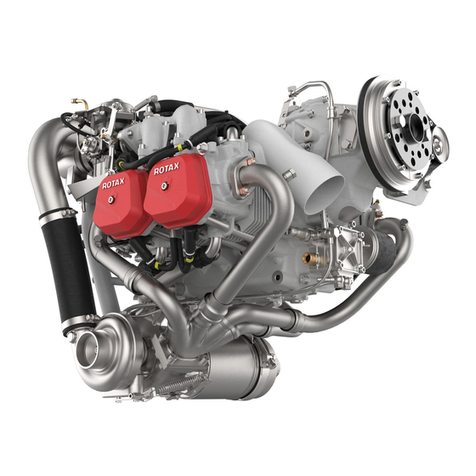
Rotax
Rotax 914 series Maintenance manual

Vetus
Vetus VF4.145 Operation manuals

MTU
MTU 20 V 4000 M73 x operating instructions

Toshiba
Toshiba Stainless Steel Washdown Duty Motor Toshwash... Brochure & specs
